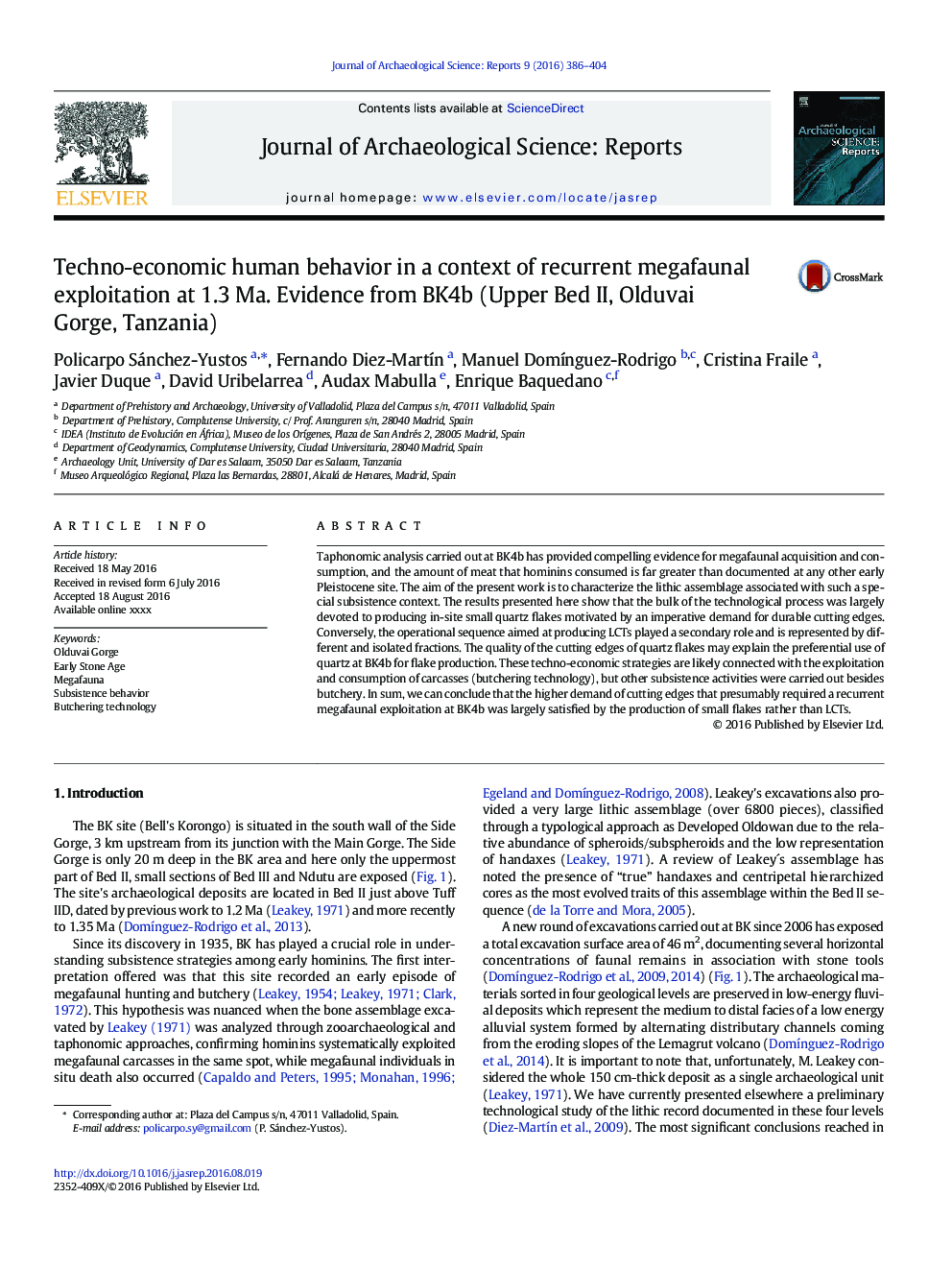| Article ID | Journal | Published Year | Pages | File Type |
|---|---|---|---|---|
| 7445509 | Journal of Archaeological Science: Reports | 2016 | 19 Pages |
Abstract
Taphonomic analysis carried out at BK4b has provided compelling evidence for megafaunal acquisition and consumption, and the amount of meat that hominins consumed is far greater than documented at any other early Pleistocene site. The aim of the present work is to characterize the lithic assemblage associated with such a special subsistence context. The results presented here show that the bulk of the technological process was largely devoted to producing in-site small quartz flakes motivated by an imperative demand for durable cutting edges. Conversely, the operational sequence aimed at producing LCTs played a secondary role and is represented by different and isolated fractions. The quality of the cutting edges of quartz flakes may explain the preferential use of quartz at BK4b for flake production. These techno-economic strategies are likely connected with the exploitation and consumption of carcasses (butchering technology), but other subsistence activities were carried out besides butchery. In sum, we can conclude that the higher demand of cutting edges that presumably required a recurrent megafaunal exploitation at BK4b was largely satisfied by the production of small flakes rather than LCTs.
Related Topics
Social Sciences and Humanities
Arts and Humanities
History
Authors
Policarpo Sánchez-Yustos, Fernando Diez-MartÃn, Manuel DomÃnguez-Rodrigo, Cristina Fraile, Javier Duque, David Uribelarrea, Audax Mabulla, Enrique Baquedano,
